
Extremely pointed garden room features a treehouse-like design and a climbing wall
A climbing wall, a study and a bedroom are all contained within this Brisbane house extension, designed by Phorm Architecture + Design to be reminiscent of a treehouse.
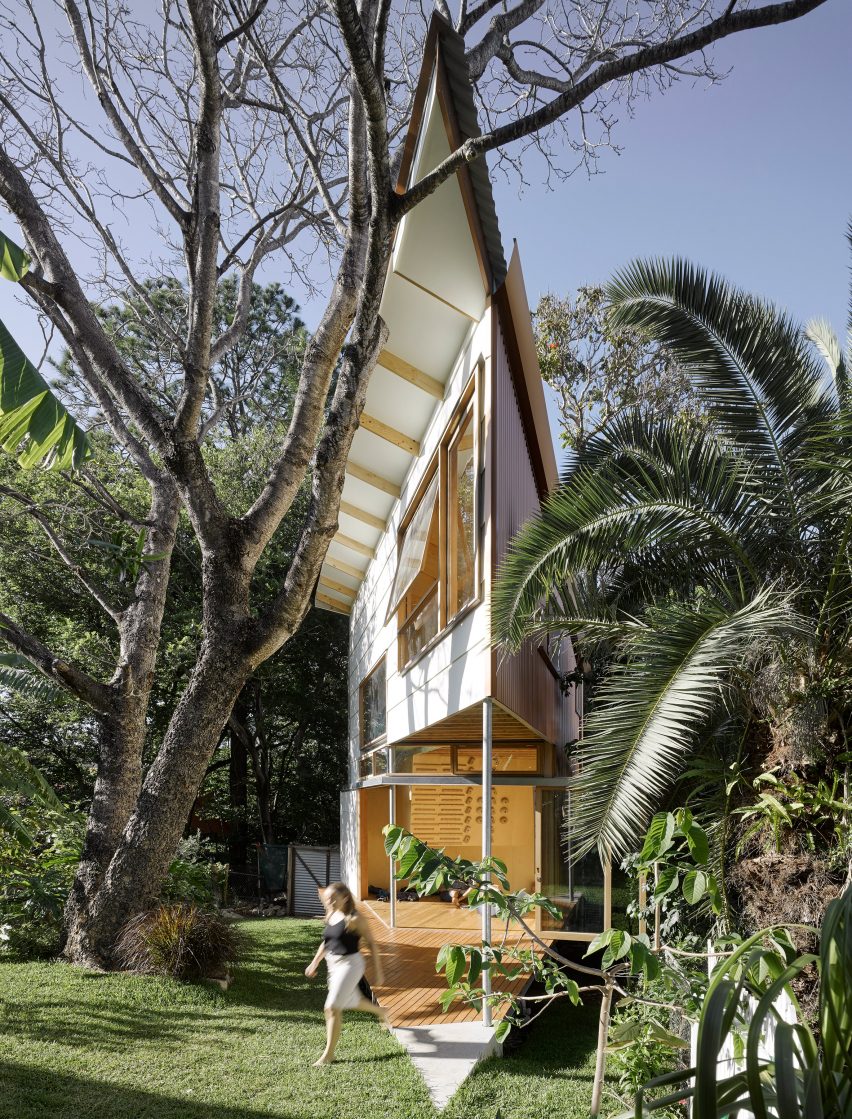
Described by the studio as a "detached residential extension", the Taringa Treehouse is built under the shelter of a tree, in the backyard of a property in the Queensland city.
The tree is one of a row that divides the yards in the suburban neighbourhood – and prompted the treehouse-inspired design.
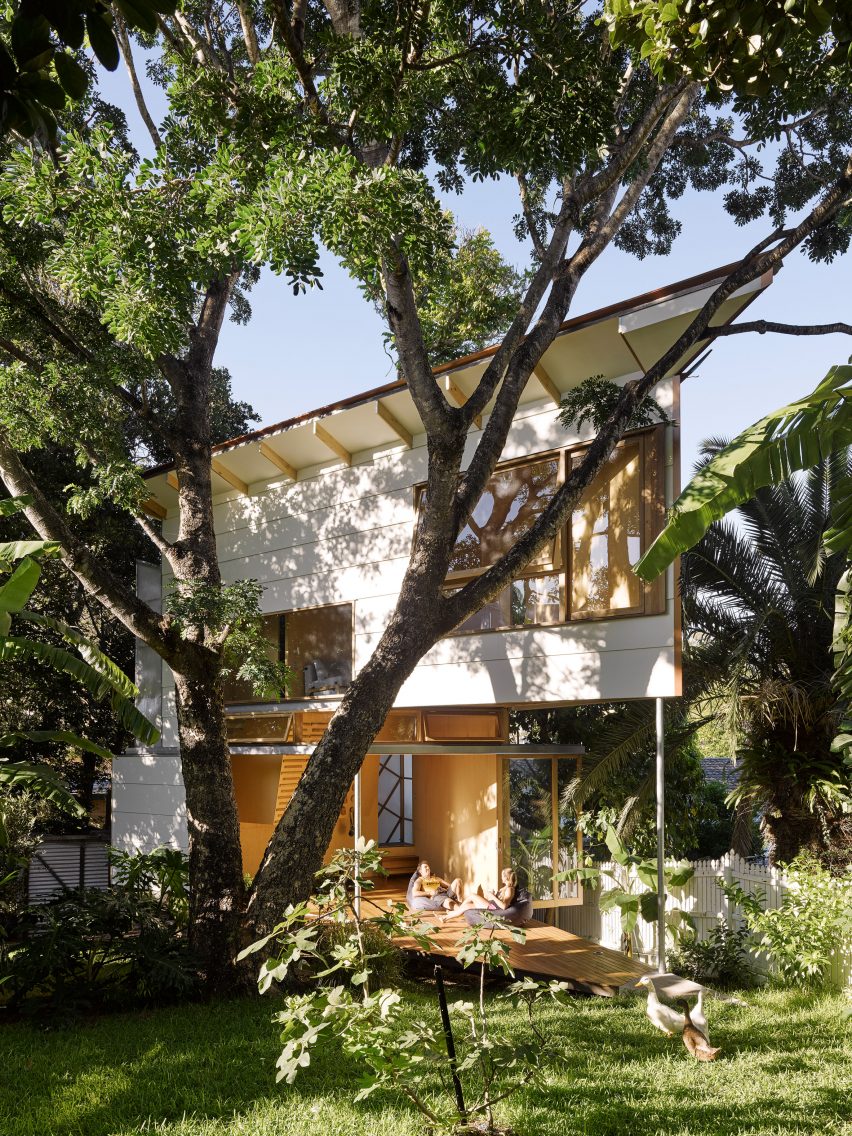
The wedge-shaped structure presents its broadest sides to the neighbouring properties and its narrowest towards the owner's home and garden.
In an effort to reduce the impact of the structure further, a ground-floor patio is cut into the tip of the two-storey structure.
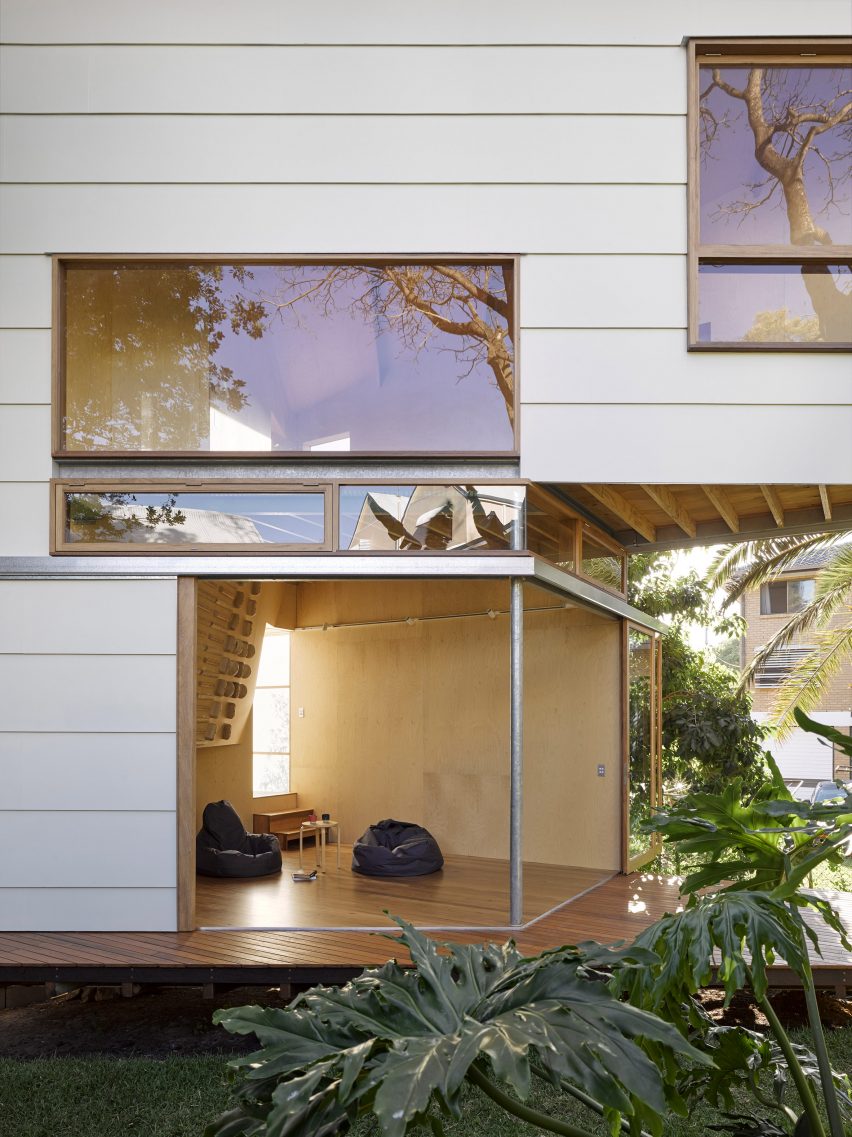
"Brisbane is a verdant, subtropical, suburban place. House lots are typically long and thin. Traditional timber and tin houses (Queenslanders) politely occupy the street edge and create largely unoccupied spaces at the rear," explained Paul Hotston of locally based Phorm Architecture + Design.
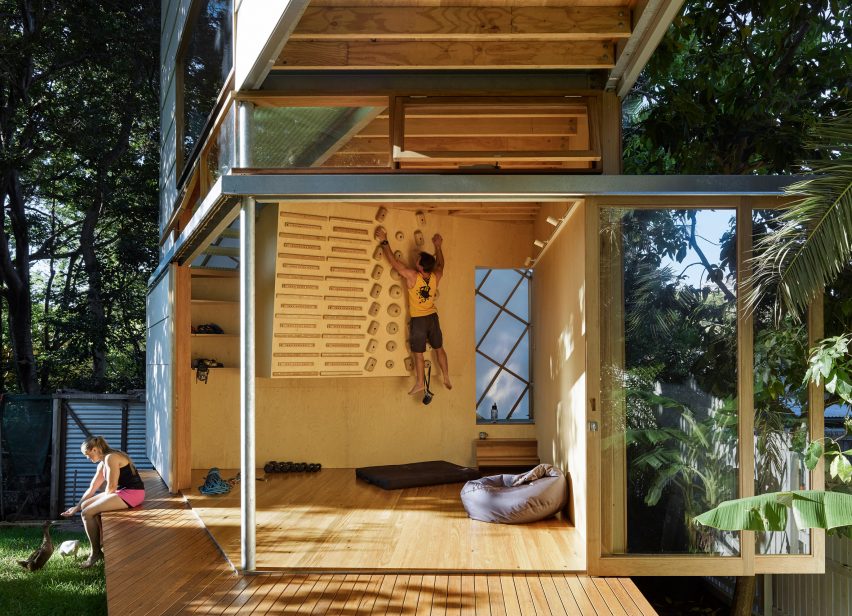
"These backyards tend to be overgrown, unruly spaces and are the domain of children and makeshift structures. The treehouse is devised as an invitation to visit and engage with this distinct yet typically unchartered territory," Hotston continued.
"The treehouse presents no formal elevation back to the original house. Only the 'thin edge of the wedge' is present. The intention was not to fill the backyard but retain the natural aspect and vacancy."
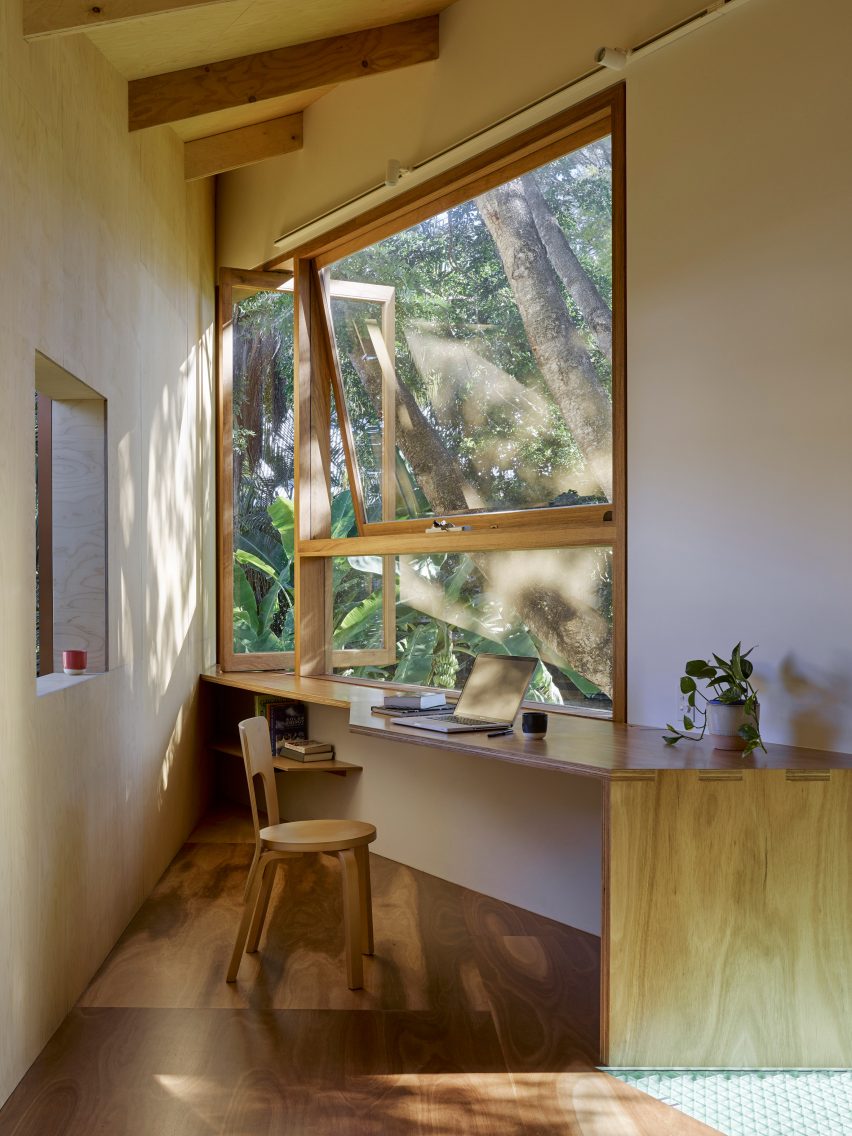
The garden-facing elevation is made from weatherboard, while metallic cladding covers the western facade that faces the neighbourhood to create an "unexpected urban artefact" among the foliage.
The mixture of cladding references the adhoc materials used by children to built backyard treehouses.
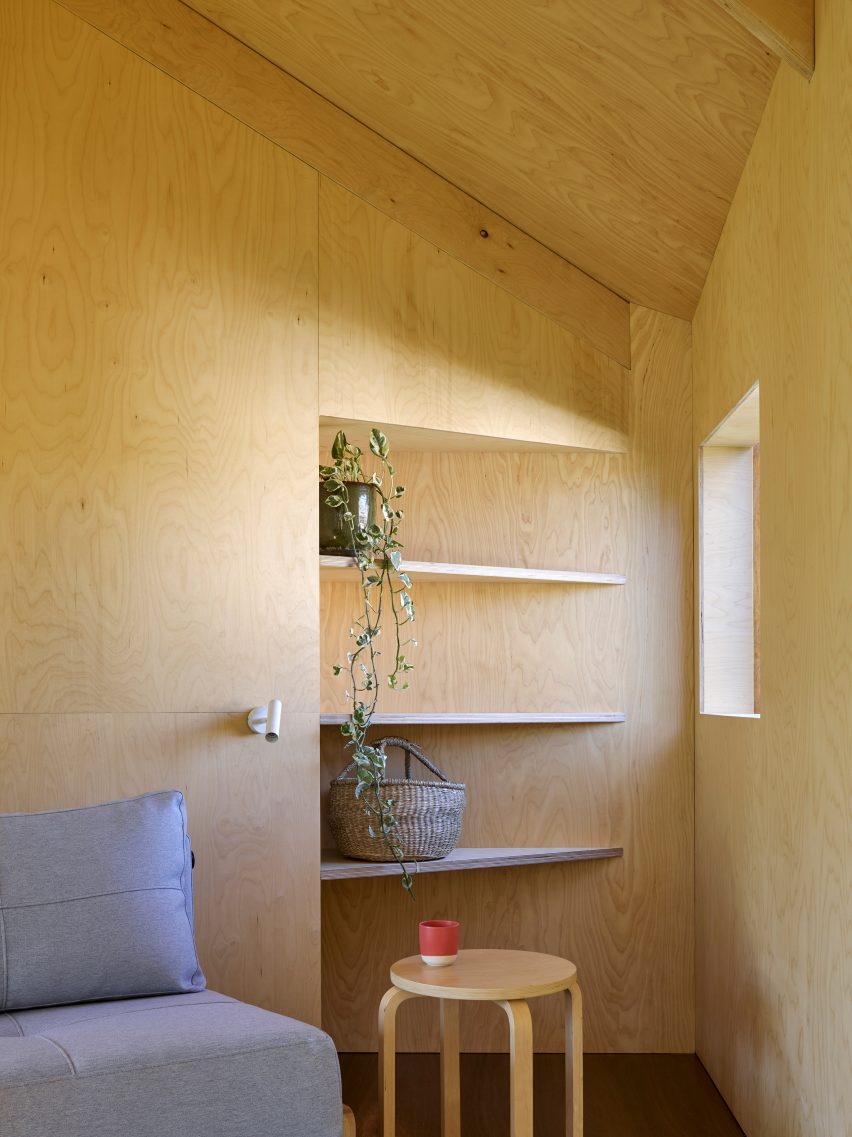
Inside, the climbing wall stretches up the back wall of an informal lounge area, while a translucent stairwell wraps around its back, leading to a study, bedroom and bathroom on the upper floor.
Spaces are wood lined throughout, bar the bathroom, which has glossy grey-painted walls that match the colour of the upholstery selected for the sofa and bean bag. A wooden table and shelves are built into the study to make the most of the angular space.
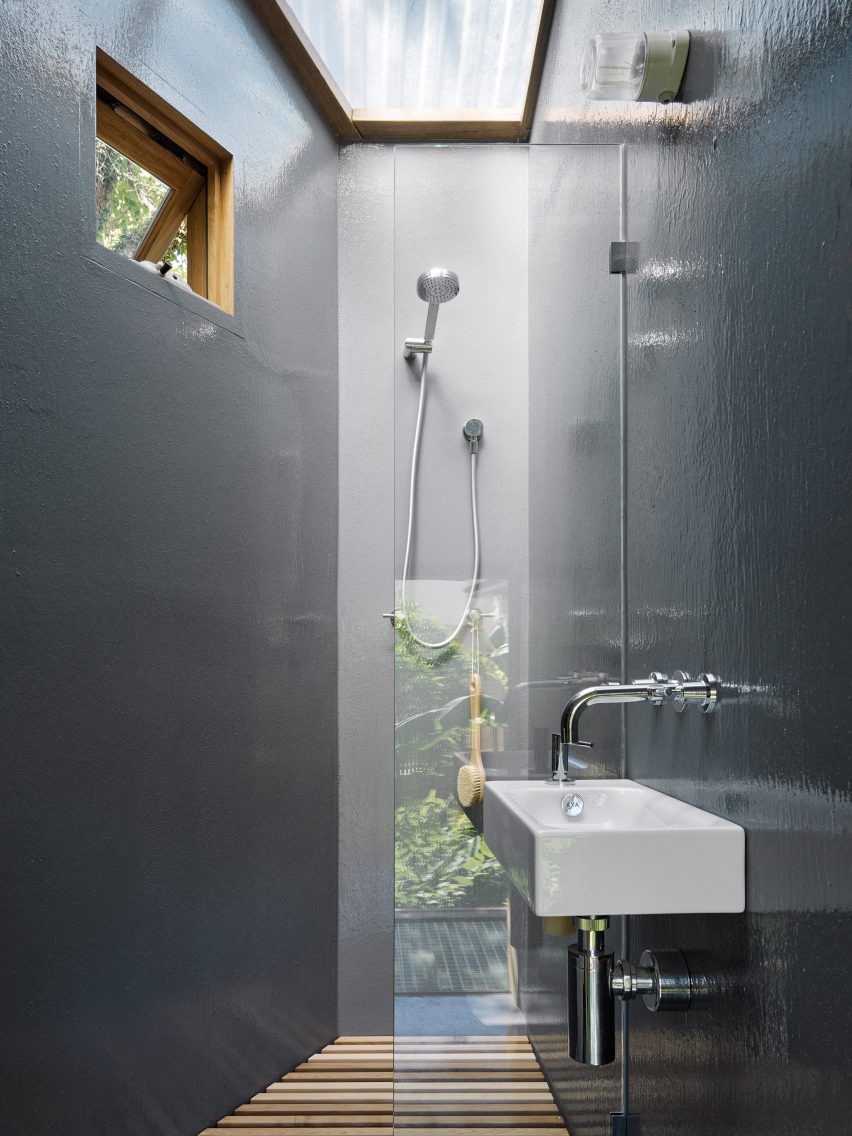
"The scale of the building is proportioned to the tree. The structure is stretched and elongated to reach the low branches," said Hotson.
"Many aspects of the treehouse are informed not from local domestic architecture but rather the playful language and sensibilities of children’s cubby houses which traditionally inhabit this terrain."
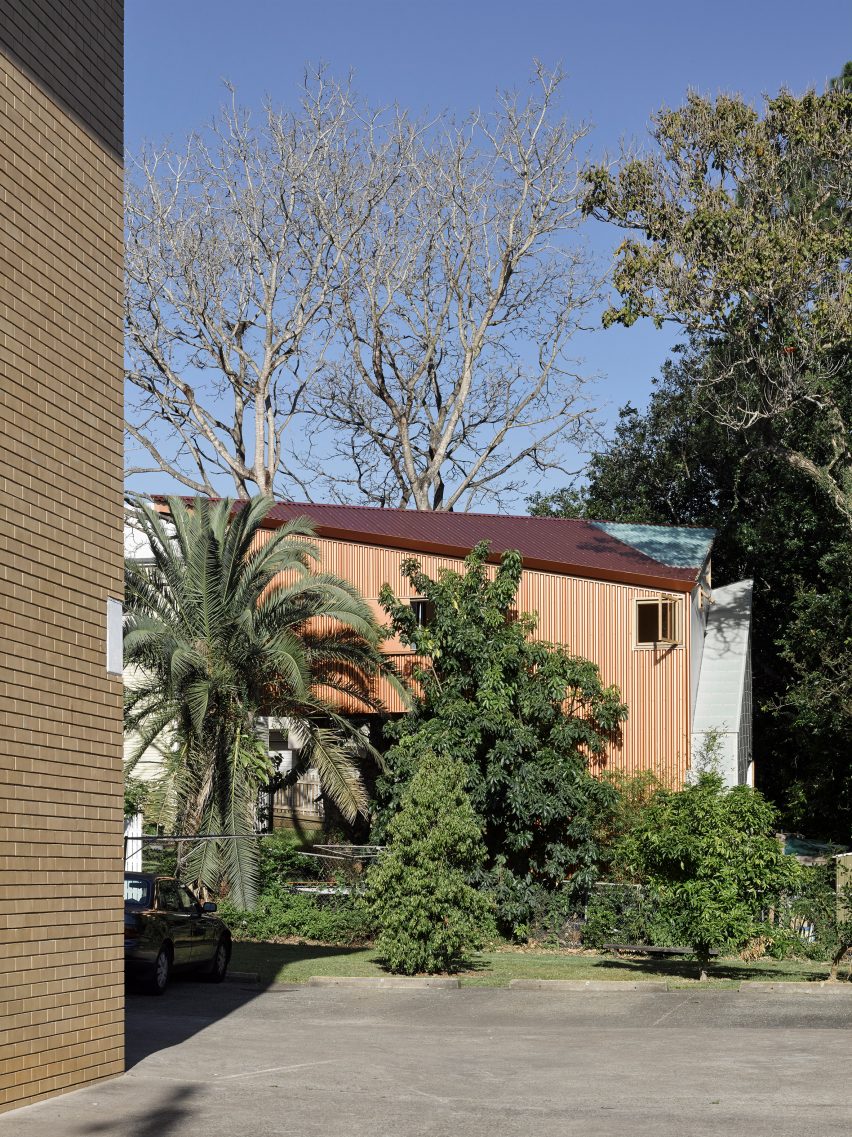
Australian architect Max Pritchard has similarly built a treehouse-like studio for himself at his self-designed home near Adelaide, selecting a forested hillside that overlooks the sea.